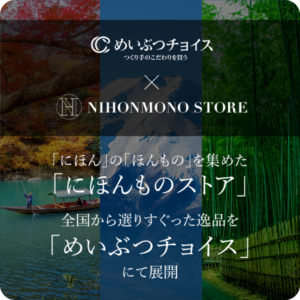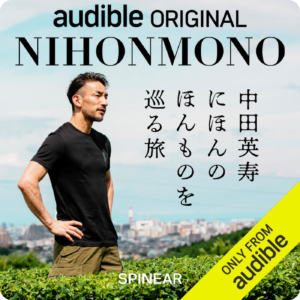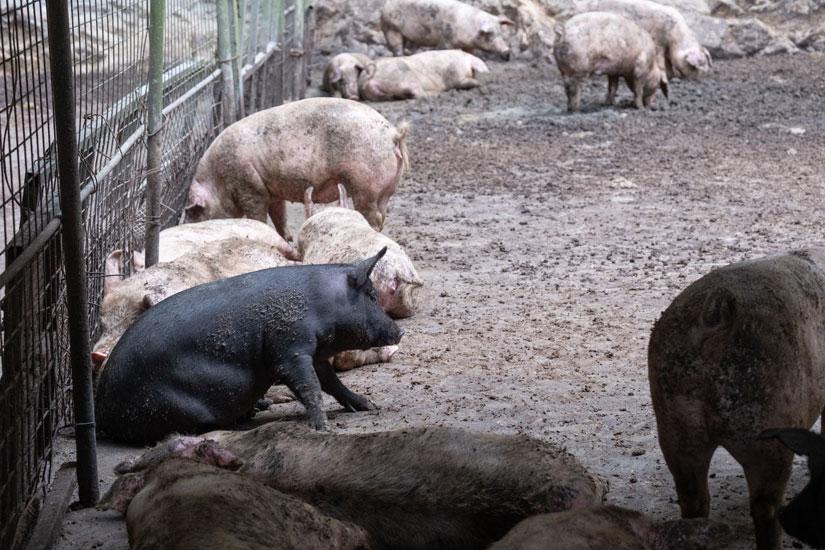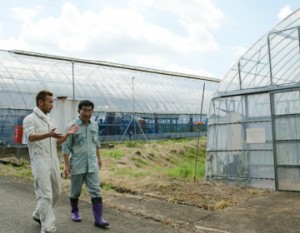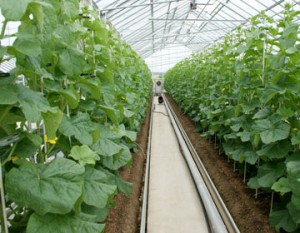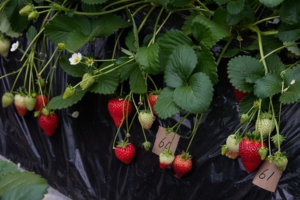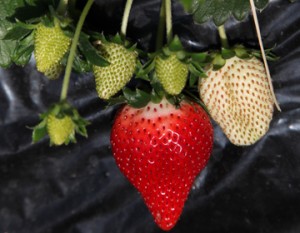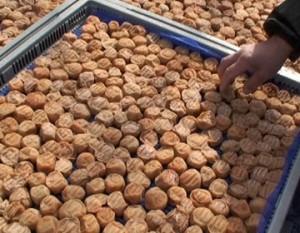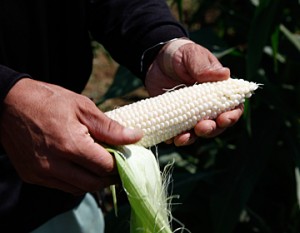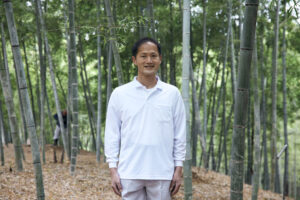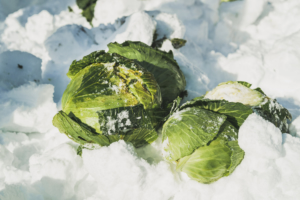Okinawa’s proud brand of pork, “Agu,” is characterized by its tender, high-quality fat and sweet flavor. Matayoshi Farm actively raises 100% purebred Agu pigs. The secret to its special flavor lies in the stress-free environment in which the pigs are raised, the high quality feed, and the commitment of the young successors to Agu.
Agu, the brand pig that bears Okinawa’s food culture
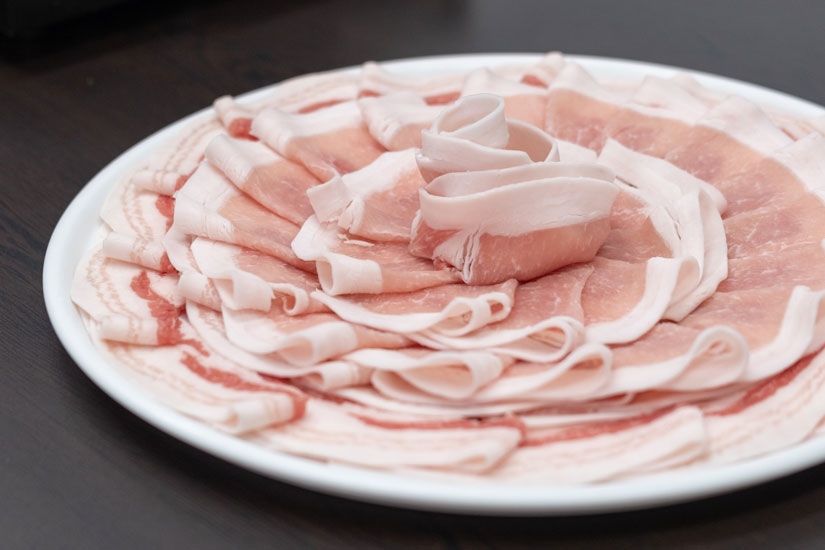
Agu, the pride of Okinawa, is a brand of island pig. It is characterized by its tender meat, rich fat, sweetness, and rich, elegant flavor. It is offered at high-end shabu-shabu restaurants and is gaining recognition both inside and outside Okinawa Prefecture as the meat of choice.
Agu pigs are a difficult breed to produce because they are smaller than most pigs, produce less meat per pig, and produce only a small number of offspring. This makes it a rare and highly prized brand of pig.
The origin of Agu pork is said to date back to the 14th century, approximately 600 years ago, when it was introduced to the Kingdom of Ryukyu from Ming Dynasty (present-day China).
After World War II, the number of Agu pigs decreased drastically to about 30, but a research institute at the Hokubu Agriculture and Forestry High School in Nago City took the lead and succeeded in restoring the original breed in 1993 through backbreeding. In 2013, Nago City declared itself the “Home of Agu” as the place where the Ryukyuan native pig, Agu, was revived.
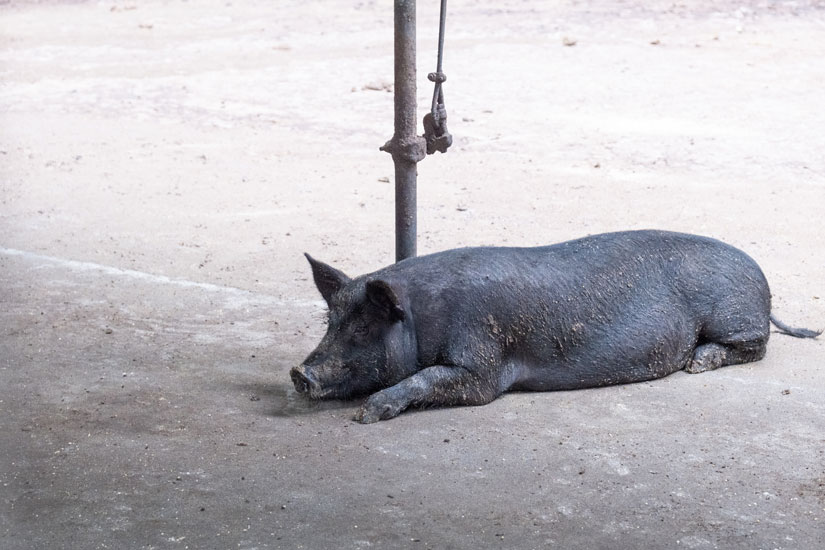
By the way, did you know that there are two types of Agu pigs?
The katakana notation “Agu” refers to pigs born from the crossbreeding of pure-blooded Agu pigs.
In contrast, “Agu” in hiragana refers to farm-raised pork that meets JA Okinawa’s standards, and is a crossbreed between a male Agu pig and a female Western pig, in essence, a “half-Aguu pig.
The smaller Agu gives birth to less than half as many pigs per litter as the Western breeds. By crossbreeding with larger, faster-growing Western breeds such as Landrace and Yorkshire, they are able to produce “Agu pigs” with high meat production while taking advantage of the superior meat quality of “Agu”.
There are 13 farms in Okinawa Prefecture that are designated as “Agu” brand pork producers, and each farmer uses a different crossbreeding pattern, resulting in pigs of different sizes and meat quality.
Matayoshi Farm, a livestock producer and farmer in Nago City in the northern part of Okinawa’s main island, has focused on crossbreeding close to the original breed in its uncompromising pursuit of “100% purebred x purebred” Agu pigs.
Matayoshi Agu” raised in a stress-free environment and on carefully selected feed
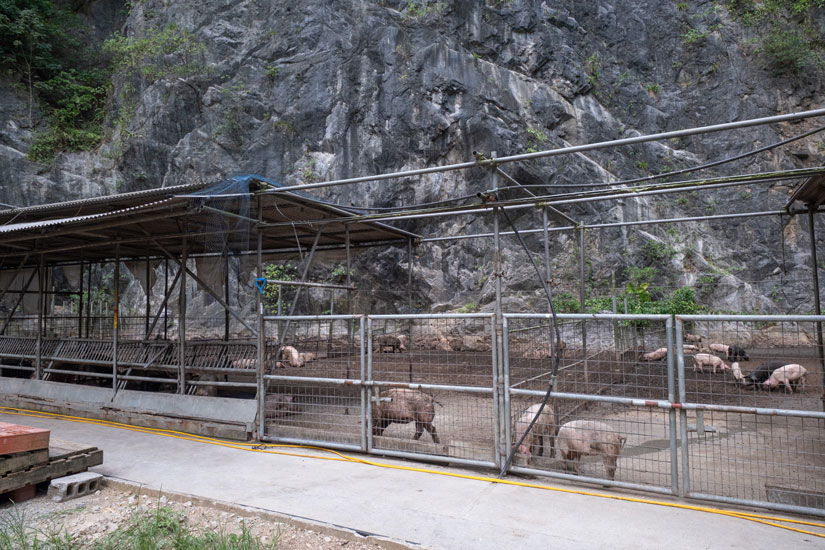
Matayoshi Farm is located at the foot of Mount Awadake in Nago City, where as many as 400 Agu pigs are raised. The land, which is a quarry area, was originally owned by the Matayoshi family and used to be a tangerine farm. Although Okinawa is hot and humid throughout the year, it is surrounded by forest and cool in the shade, making it a comfortable environment for the pigs.
One of the characteristics of the “Matayoshi Agu” brand pigs is that they are raised in an environment where they can run around freely from one month after birth. The pigs are raised in a spacious and stress-free environment, which leads to better meat quality and tenderness.
They also do not use any hormones or antibiotics, and are additive-free.
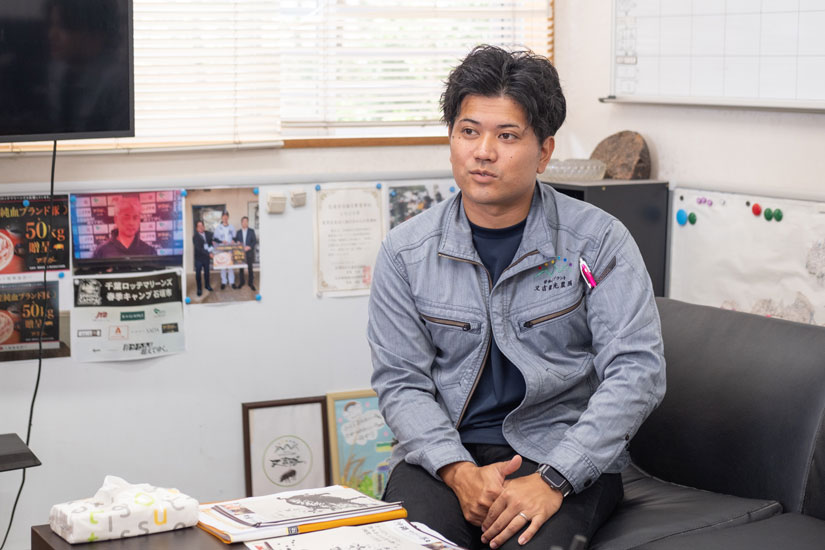
Founded in 2004, Matayoshi Farm was incorporated in 2013, and in 2021, the main members, led by sales leader Asataro Matayoshi, were replaced by young members in their 20s.
Under the management philosophy of “continuing to bring peace of mind to the community through food,” the company is focusing on increasing the rarity and brand value of its “pure-blooded Agu pork.
The Agu pig is half the size of a normal pig and produces half as many pigs as a normal pig, making it a difficult breed from a business model standpoint, but its superiority in taste is outstanding. We would like to continue to take on this challenge by carefully preserving the original breed,” says Matayoshi.
While Western breeds are fattened up in about six months, it takes about 10 months to fatten up an Agu pig. Because of the cost of feed, the unit price is maintained by branding the pigs.
The problem is that the production volume is limited. We can increase the quantity by fattening the pigs up quickly, but the biggest fear is that the meat quality will deteriorate. Every time we ship, we look at the actual product and check the amount of fat on it,” he says. The desire to preserve the original Agu breed by sticking to pure blood can be clearly felt.
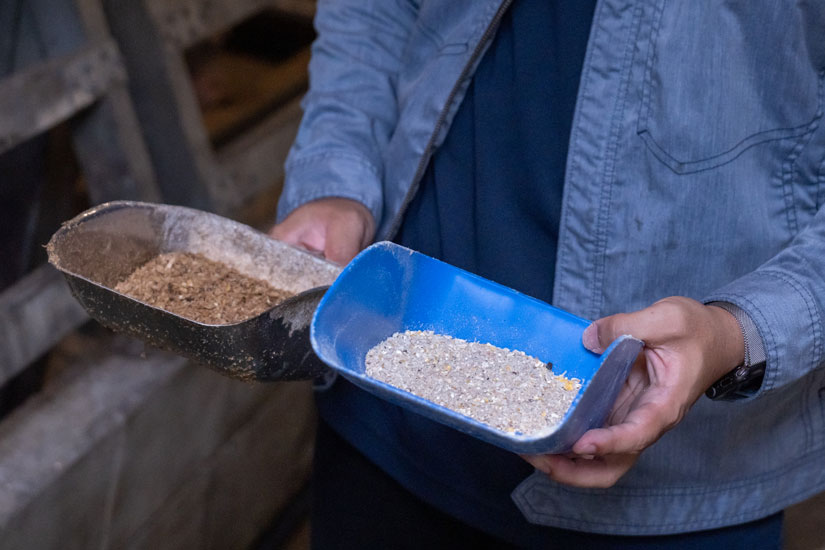
He is also particular about feed, feeding two types of feed, adjusting the balance and quantity according to the stage of growth.
The white feed is the staple food for the pigs and is a formula feed in accordance with JA’s regulations for Agu pigs.
The brown one is Matayoshi Farm’s original fermented feed containing beer lees, rice bran, and pineapple lees. The nutrients in the lees contain lactic acid bacteria and are expected to improve the intestinal environment.
The farm changes the content and quality of the feed according to the growth stage of the piglets, for example, feeding more grain and protein at first and increasing the amount of fermented feed when fattening up piglets to increase their flavor.
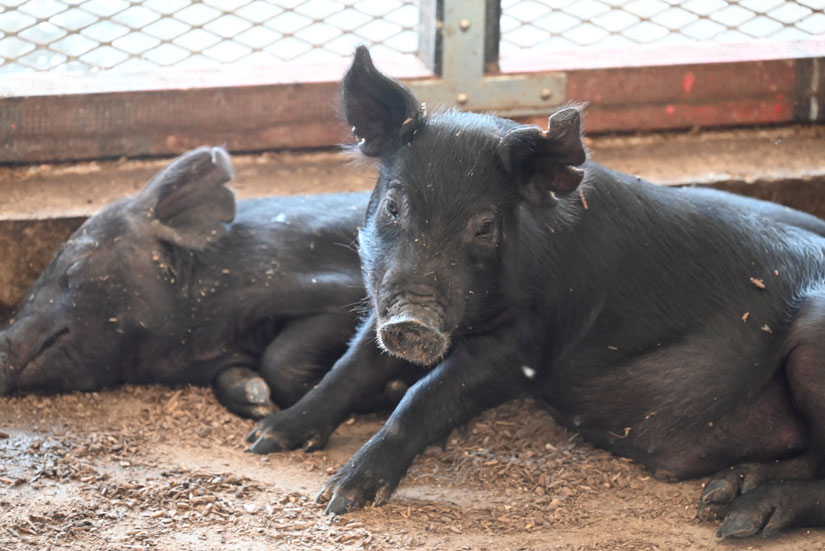
While the cost of feed has skyrocketed in recent years and they are struggling, they are negotiating to be able to wholesale their brand as “Matayoshi Agu” at a higher unit price, more than double the price of regular pigs.
He has been negotiating with his customers, including a shabu-shabu restaurant in Naha City, to sell their products at more than twice the unit price of ordinary pigs, under the brand name of “Matayoshi Agu.
The young members of the group are impressive for their straightforwardness: “We frankly tell them about the rising cost of feed and the low productivity of Agu pork, but we also let them taste it and decide if they want to do business with us or not.
Sweet and melt-in-your-mouth Agu pork served in shabu-shabu
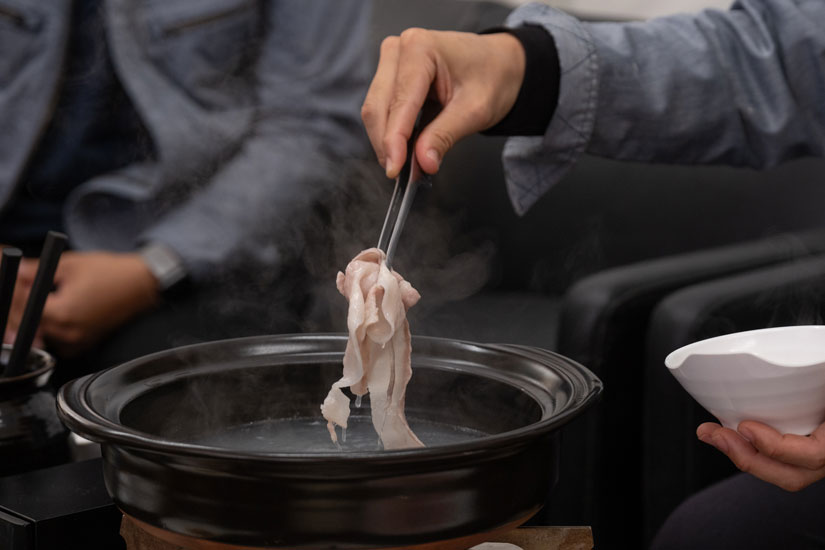
Matayoshi Agu” is beautifully fatty.
Agu pork is characterized by its tender meat, rich fatty flavor, and low fat melting point, which makes it melt in the mouth. It is rich in oleic acid, which gives it an aromatic and flavorful taste.
Agu is also high in linoleic acid, which has an almost animal-like sourness and odor, but it also has a wild flavor and is commonly associated with umami.
In addition, Agu has the advantage of having a low melting point of fat, so its “fat is not too sticky. The proof of this is that even when it is cooked, it does not easily become soggy.
The most popular parts of Agu pork are the belly and shoulder loin, and shabu-shabu is said to be the best for enjoying the flavor of the ingredients.
The sweet and easy-to-eat loin is recommended to be served with ponzu (Japanese sauce made of citrus juice and soy sauce) or sesame sauce.
The belly, which has a strong flavor of fat, is tender and does not become hard even when cooked. It goes well with a squeeze of freshly caught shikwasa (citrus fruit) ◎.
Agu’s unique marbling contains many tasty ingredients, and both the lean and fat parts have a rich flavor. The most important point that differentiates Agu is that its flavor is so strong that western varieties seem bland.
Aiming for Livestock Production and Agriculture Rooted in the Local Community
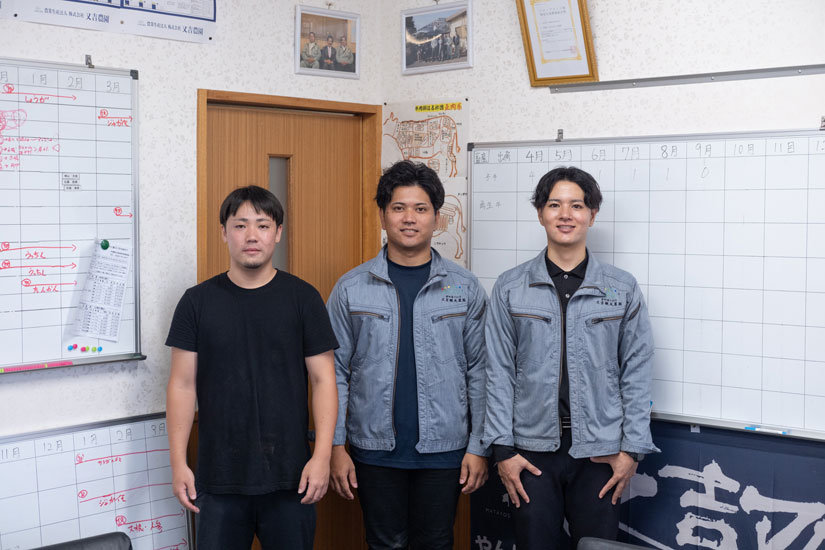
We asked the young trio of sales leader Mr. Matayoshi (center), Mr. Sotoma (left), who is in charge of the processing department, and Mr. Miyagi (right), who is in charge of public relations, about their ambitions for the future.
They said, “With the aging and decline of the farming industry becoming an issue, we want to go against the grain and raise the occupational status of agriculture. We want to raise awareness by actively promoting the production of rare and valuable agu, make the company a place where young people want to try farming, and protect the culture, lifestyle, and scenery of the region.
We would like to strengthen our business model to protect and increase the number of agu seeds we have, based on our “commitment to pure blood.
We want to strengthen our business model, which is based on our commitment to pure blood, while protecting and increasing the number of agu seeds we currently have.
The young successors of the farm, each with his or her own passion, are putting their heart and soul into raising Agu pigs.
They will continue to earnestly pursue the essence of the product without losing sight of its true nature, and will continue to convey the attractiveness of Agu from Okinawa to Japan and the world.
